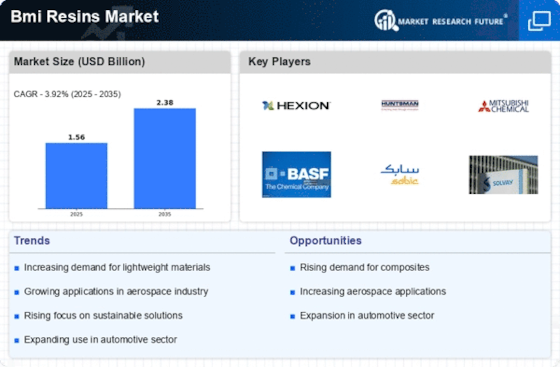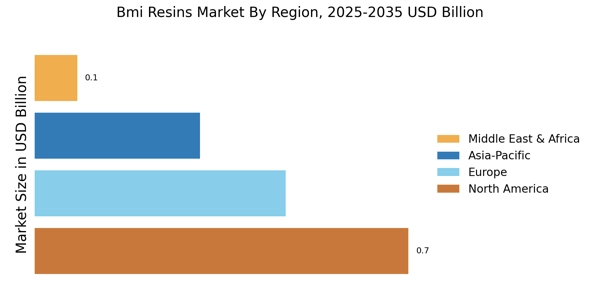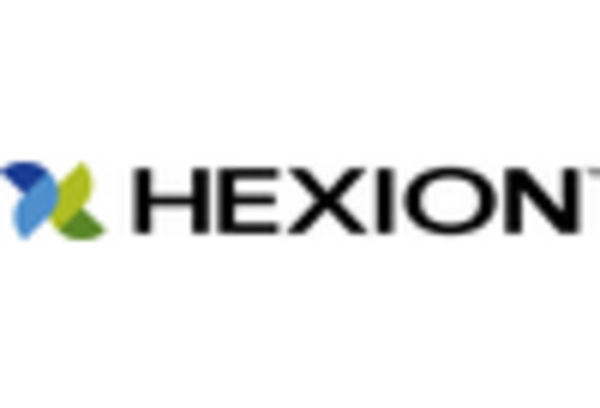Expansion in Aerospace Applications
The aerospace sector is a critical driver for the Bmi Resins Market, as the demand for lightweight and durable materials continues to rise. BMI resins are increasingly utilized in aircraft components due to their excellent mechanical properties and resistance to extreme temperatures. In 2025, the aerospace industry is expected to represent a substantial portion of the BMI resins market, fueled by the ongoing development of new aircraft models and the need for enhanced fuel efficiency. The trend towards more sustainable aviation solutions may further propel the adoption of BMI resins, as manufacturers seek materials that contribute to lower emissions and improved performance.
Increasing Demand in Automotive Sector
The Bmi Resins Market is experiencing a notable surge in demand from the automotive sector. As manufacturers strive to enhance vehicle performance and reduce weight, the adoption of advanced materials like BMI resins is becoming more prevalent. These resins offer superior thermal stability and mechanical properties, making them ideal for high-performance applications. In 2025, the automotive industry is projected to account for a significant share of the BMI resins market, driven by the need for lightweight components that improve fuel efficiency. Furthermore, the integration of BMI resins in electric vehicles is likely to bolster market growth, as these materials can withstand the rigorous demands of modern automotive engineering.
Regulatory Support for Advanced Materials
Regulatory frameworks are increasingly favoring the use of advanced materials, which is beneficial for the Bmi Resins Market. Governments are promoting the adoption of lightweight and high-performance materials to enhance energy efficiency and reduce environmental impact. This regulatory support is likely to drive the demand for BMI resins, as industries seek compliant materials that meet stringent performance standards. In 2025, the influence of regulations on material selection is expected to be a key factor in the growth of the BMI resins market, as companies align their product offerings with sustainability goals and regulatory requirements.
Rising Investment in Research and Development
Investment in research and development is a pivotal driver for the Bmi Resins Market. Companies are increasingly focusing on innovating and enhancing the properties of BMI resins to meet the evolving needs of various industries. This trend is likely to lead to the introduction of new formulations and applications, thereby expanding the market. In 2025, the emphasis on R&D is expected to result in the development of advanced BMI resin products that offer improved performance characteristics, which could attract new customers and applications across sectors such as aerospace, automotive, and electronics.
Growth in Electronics and Electrical Applications
The Bmi Resins Market is witnessing growth driven by the increasing use of BMI resins in electronics and electrical applications. These resins are favored for their excellent dielectric properties and thermal stability, making them suitable for insulating materials in various electronic devices. As the demand for miniaturization and high-performance electronics escalates, the market for BMI resins is projected to expand significantly. In 2025, the electronics sector is anticipated to contribute notably to the overall market, as manufacturers seek materials that can withstand high temperatures and provide reliable performance in compact designs.


















Leave a Comment